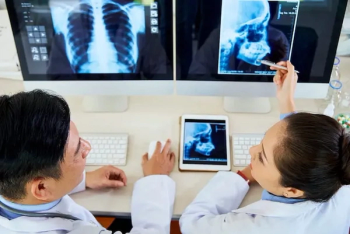
Seven Takeaways from New Consensus Recommendations for Cardiac MRI Assessment of COVID-19
Consensus recommendations from the Society for Cardiovascular Magnetic Resonance provide pertinent insights on the unique abilities of cardiac magnetic resonance imaging (MRI) to provide optimal characterization of myocardial tissue and diagnosis of COVID-19-related myocardial injuries.
In order to facilitate improved standardization for the assessment of cardiac complications associated with COVID-19, the Society for Cardiovascular Magnetic Resonance has published new consensus recommendations for the use of cardiac magnetic resonance imaging (MRI) during and after COVID-19 infection.
Here are seven takeaways from the consensus recommendations that were recently published in the
1. In cases of suspected acute myocarditis and infarction, the consensus authors noted that T2-weighted cardiac MRI scans allow radiologists to view focal and global myocardial edema that accompany these conditions.
2. Through quantitative characterization of myocardial tissue, the consensus authors suggested that T2 MRI mapping and other parametric mapping techniques with T1 and extracellular volume (ECV) mapping may provide better sensitivity than late gadolinium enhancement (LGE) of MRI for diagnosing acute and chronic myocardial disease.
3. In patients with COVID-19, the consensus authors noted that impaired peak global longitudinal (GLS) and global circumferential strain (GCS) may be caused by myocardial inflammation without lymphocytic myocarditis, myocardial infection, myocarditis, or global myocardial injury from hypoperfusion.
(Editor’s note: For related content, see “
4. The consensus authors cautioned that mid-wall, patchy, subepicardial or scattered distributions on LGE of MRI may appear in conjunction with typical and atypical clinical presentations in patients with COVID-19.
5. In order to ensure optimal detection of myocardial inflammation, a minimum of three short-axis slices for the left ventricle are recommended, according to the consensus authors.
6. Adding stress perfusion into the cardiac MRI protocol enables radiologists to look for possible signs of myocarditis, obstructive coronary artery disease (CAD) and other COVID-19-related cardiovascular changes in patients who present with chest pain.
7. For patients with acute COVID-19 infection, increased right ventricle afterload and/or parenchymal injury with COVID-mediated hypoxia can lead to impaired peak GLS and GCS with the right ventricle, increased wall stress of the right ventricle and fibrosis. For right ventricle injuries, the consensus authors suggested cardiac MRI angiography and blood pool oxygenation measurement via T2 mapping can provide adjunctive diagnostic benefit.
Newsletter
Stay at the forefront of radiology with the Diagnostic Imaging newsletter, delivering the latest news, clinical insights, and imaging advancements for today’s radiologists.




